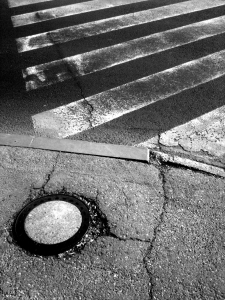A pedestrian was injured by a wrong-way delivery worker bicyclist on a one-way street. The pedestrian was crossing due to construction barriers blocking his path on the sidewalk.

In a lawsuit he filed several months later, plaintiff alleged a large trash bin placed on street-level parking in front of the private building under construction obstructed his view and created an unsafe condition for anyone crossing the street. His lawsuit, Bufkin v. Felipe’s Louisiana LLC, named as defendants the employer of the bicyclist, the construction company that had obstructed the sidewalk and the building owner.
The construction company sought summary judgment from the trial court, contending the trash bin wasn’t unreasonably dangerous and the potential danger was open and obvious to any who encountered it. The trial court denied this request, but the Louisiana Supreme Court later reversed.
Our Fort Lauderdale pedestrian injury lawyers understand the court relied heavily on the “open and obvious” doctrine in reaching its decision. Although injury resulted from a traffic collision on a public road, premises liability law is applicable because the construction company, by obstructing public sidewalk and several parking spaces, assumed temporary ownership of that area. As such, it had a duty to keep the area in a reasonably safe condition for the public.
But the open and obvious doctrine is a key defense often employed by those accused of failure to keep a property safe. The general rule is a possessor of a premises has to exercise reasonable care in protecting invitees from unreasonable risk of harm resulting from a dangerous condition. If for some reason that is not possible, the property owner/possessor owes a duty to warn of that dangerous condition. Under the open and obvious doctrine, the theory is that when a danger is blatantly obvious to any reasonable person, that in and of itself serves as sufficient warning, and the person is expected to recognize the danger and take steps to avoid it.
In the Bufkin case, plaintiff was walking through the historic French Quarter of New Orleans when he came across a construction barrier that blocked the sidewalk. A sign instructed pedestrians to move to the sidewalk on the other side of the one-way street. A large metal trash bin from the construction company occupied two street-side parking spaces adjacent to the building.
Plaintiff stood next to the trash bin and allowed two vehicles (traveling in the correct direction) to proceed before he entered the roadway. He said he did not see the bicyclist (traveling the wrong direction) until seconds before impact. The bicyclist didn’t see the pedestrian until it was too late.
After he filed his lawsuit, the construction company moved for summary judgment. Trial court denied the request, noting sufficiency of warning offered by the sidewalk closure sign was a question of fact best settled at trial. An appellate court denied review of this ruling, but the state supreme court accepted.
The high court concluded that because the trash bin was clearly marked and clearly visible, and that any hazard it posed was obvious and apparent, the company did not owe a duty to warn pedestrians of possible danger.
Plaintiff should still pursue action against the restaurant employer and insurer of the wrong-way cyclist. But any claim against the construction firm in this case has been dismissed.
Call Fort Lauderdale Injury Attorney Richard Ansara at (954) 761-4011. Serving Broward, Miami-Dade and Palm Beach counties.
Additional Resources:
Bufkin v. Felipe’s Louisiana LLC, Oct. 15, 2014, Louisiana Supreme Court
More Blog Entries:
Major v. City of Hartville – Constructive Notice in Premises Liability Lawsuit, Oct. 13, 2014, Fort Lauderdale Injury Attorney Blog
 Broward Injury Lawyer Blog
Broward Injury Lawyer Blog



